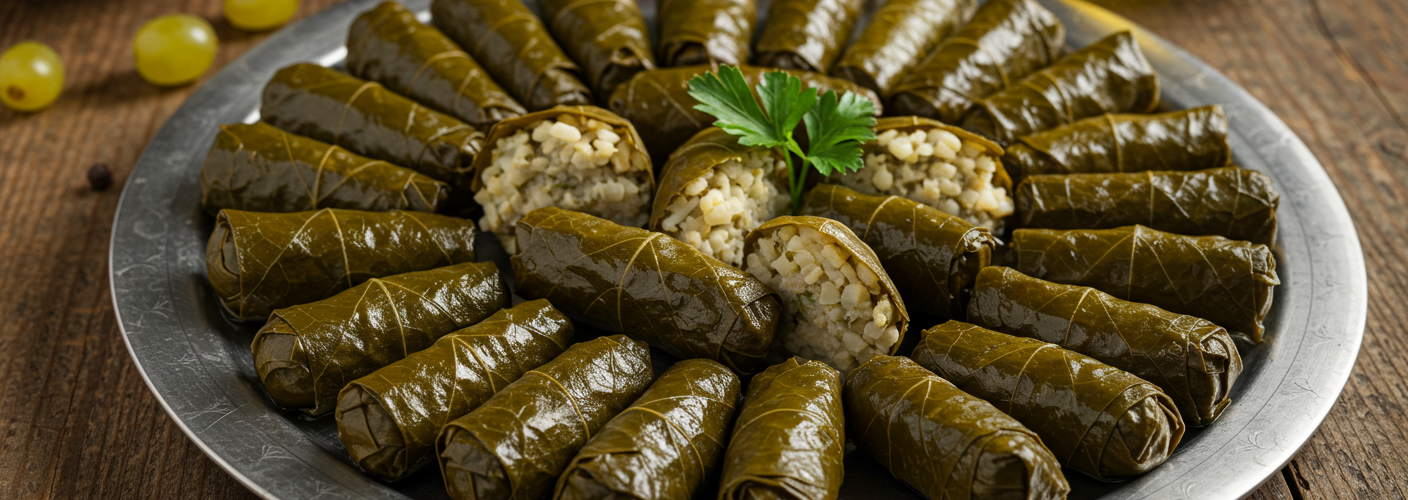When it comes to Middle Eastern cuisine, few dishes resonate as profoundly as Warak Dawali—Syrian-style stuffed grape leaves. This delightful dish, characterized by its vibrant flavors and intricate preparation, is a staple found in homes and restaurants across Syria. A perfect embodiment of the region’s culinary heritage, Warak Dawali is much more than just a meal; it’s an experience rooted in tradition, family, and togetherness.
Origins and Cultural Significance
The term “Warak Dawali” translates to “leaves of the vine,” highlighting the main ingredient: grape leaves. The custom of stuffing grape leaves dates back centuries, with variations found across different Mediterranean and Middle Eastern cultures. In Syria, the practice often becomes a communal event, with family members gathering to prep, cook, and enjoy the meal together. This ritual underscores the importance of community and family, values that are deeply cherished in Syrian culture.
Preparing the Perfect Warak Dawali
To create authentic Warak Dawali, you’ll need fresh grape leaves, a mixture of rice, meat (usually lamb or beef), and an array of spices. The process begins with blanching the grape leaves to soften them, making them pliable for rolling. The stuffing typically consists of short-grain rice combined with minced meat, diced tomatoes, and a blend of spices such as cinnamon, allspice, and pepper. Fresh herbs like parsley and mint add a burst of flavor, while a drizzle of lemon juice brings a refreshing acidity to the dish.
Rolling the grape leaves can be somewhat of an art form. Each leaf must be carefully filled and wrapped to ensure the stuffing remains intact during cooking. Once rolled, the leaves are placed in a pot, often layered with additional leaves or slices of tomato, and cooked slowly in a mixture of water and olive oil. Some families add lemon slices to the cooking pot, as the citrus not only enhances the flavor but also helps tenderize the meat and rice.
The Culinary Experience
Warak Dawali is typically served warm, either as a side dish or as a main course accompanied by yogurt or a fresh salad. The presentation is key: the stuffed grape leaves are beautifully arranged on a serving platter, often garnished with lemon wedges and sprigs of fresh herbs. Each bite is a delightful combination of tender grape leaf, fragrant filling, and a hint of citrus, making it a truly satisfying dish.
In addition to being delicious, Warak Dawali is also highly nutritious. The grape leaves are low in calories and high in vitamins A and C, while the rice and meat provide essential carbohydrates and protein. This makes it not only a flavorful choice but also a wholesome one, perfect for those seeking a balanced meal.
Conclusion
Syrian Warak Dawali represents not just food but a bridge between generations, cultures, and families. As you take the time to prepare and share this dish with loved ones, you’re partaking in a rich tradition that brings people together. Whether enjoyed at a family gathering, a festive celebration, or simply as a treat on a cozy evening at home, Warak Dawali is bound to leave a lasting impression on anyone fortunate enough to savor its exceptional flavors. So next time you crave something warm, comforting, and filled with history, look no further than a plate of these exquisite stuffed grape leaves.




Add comment